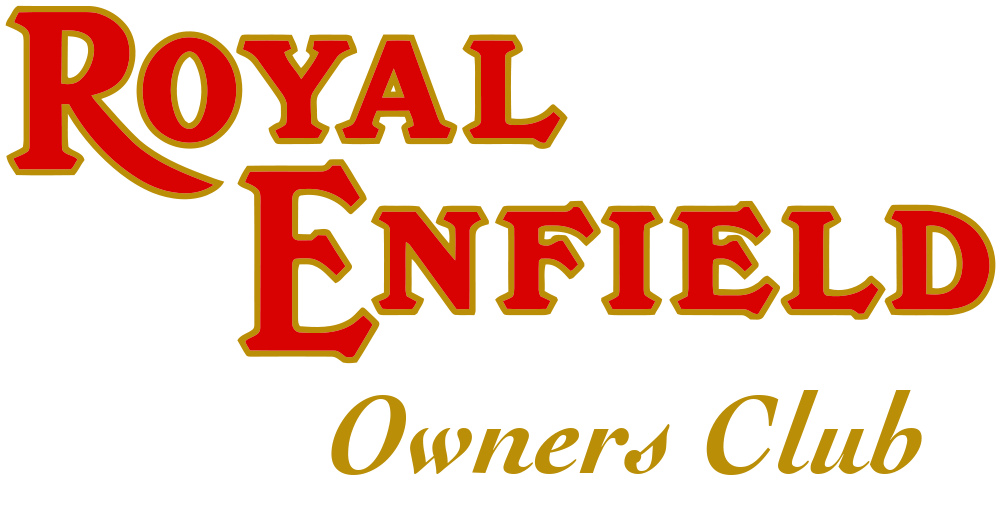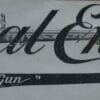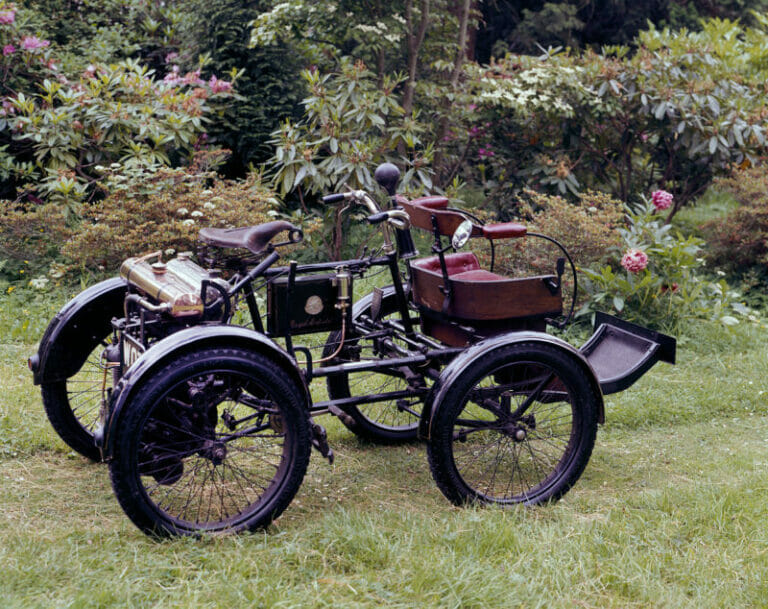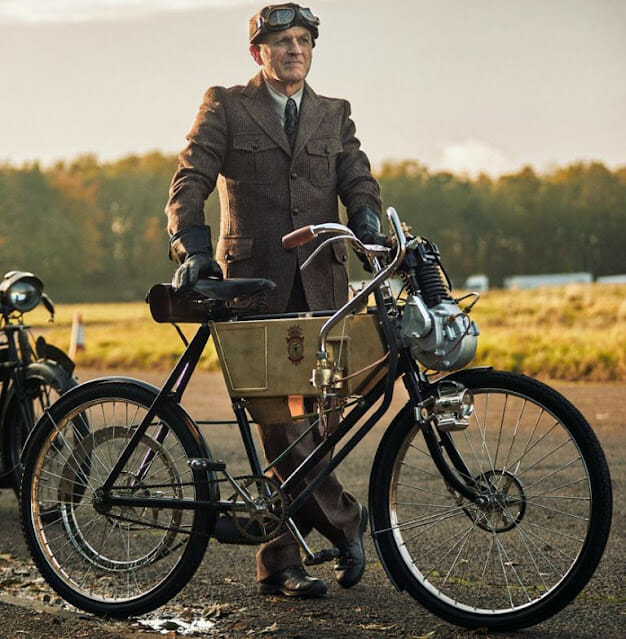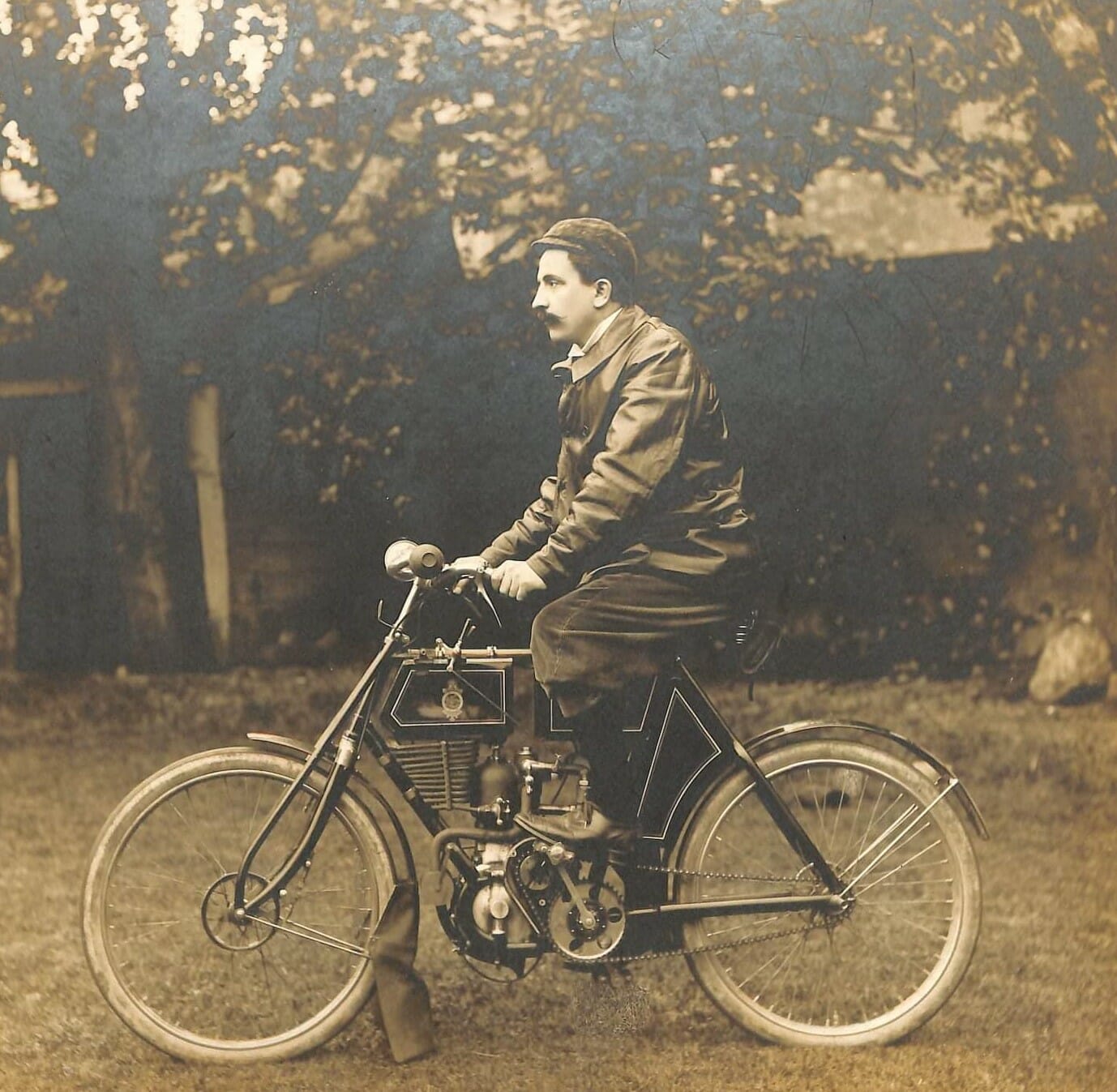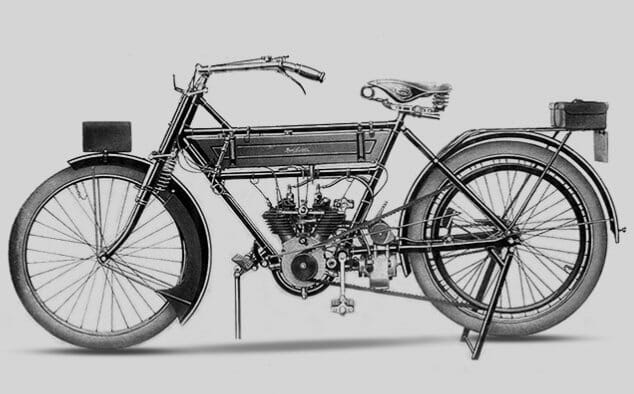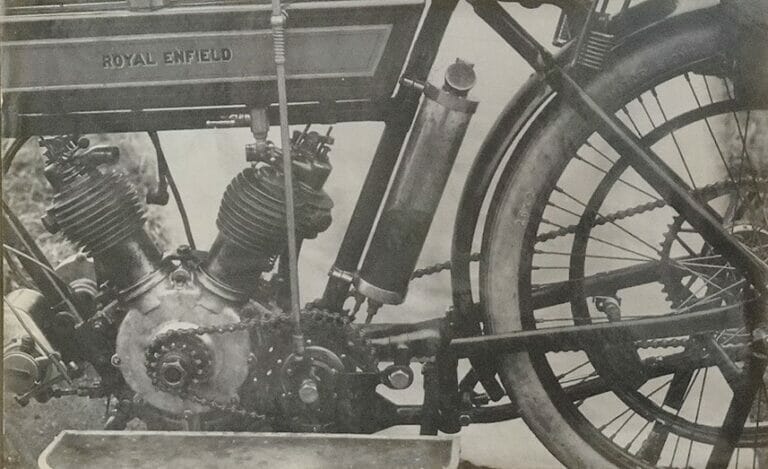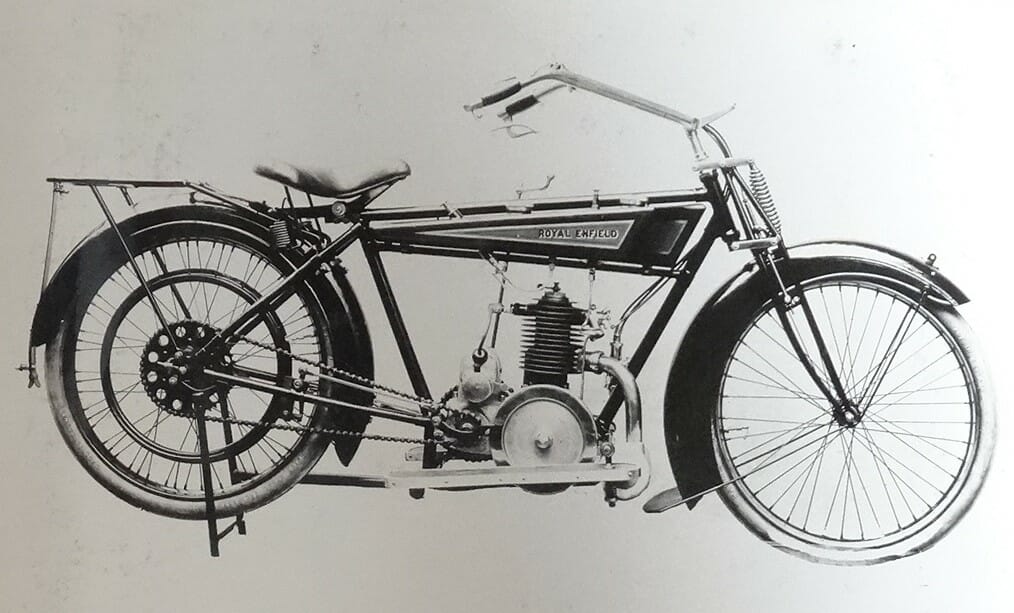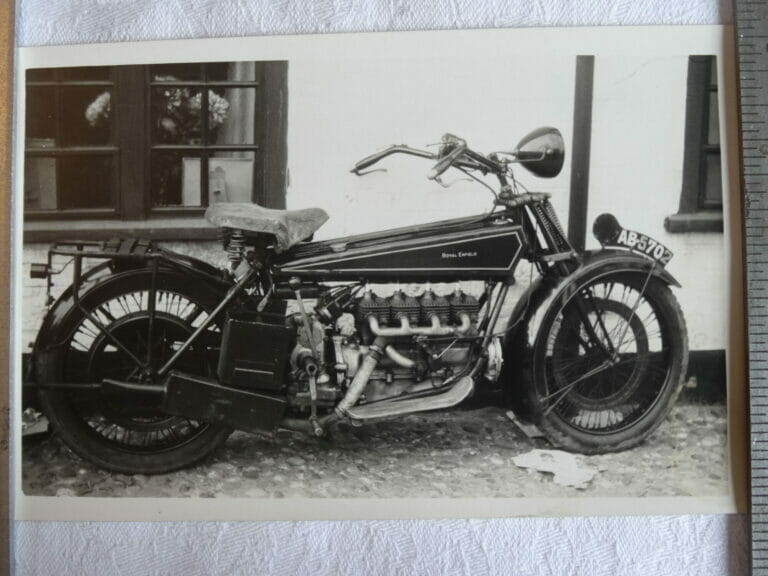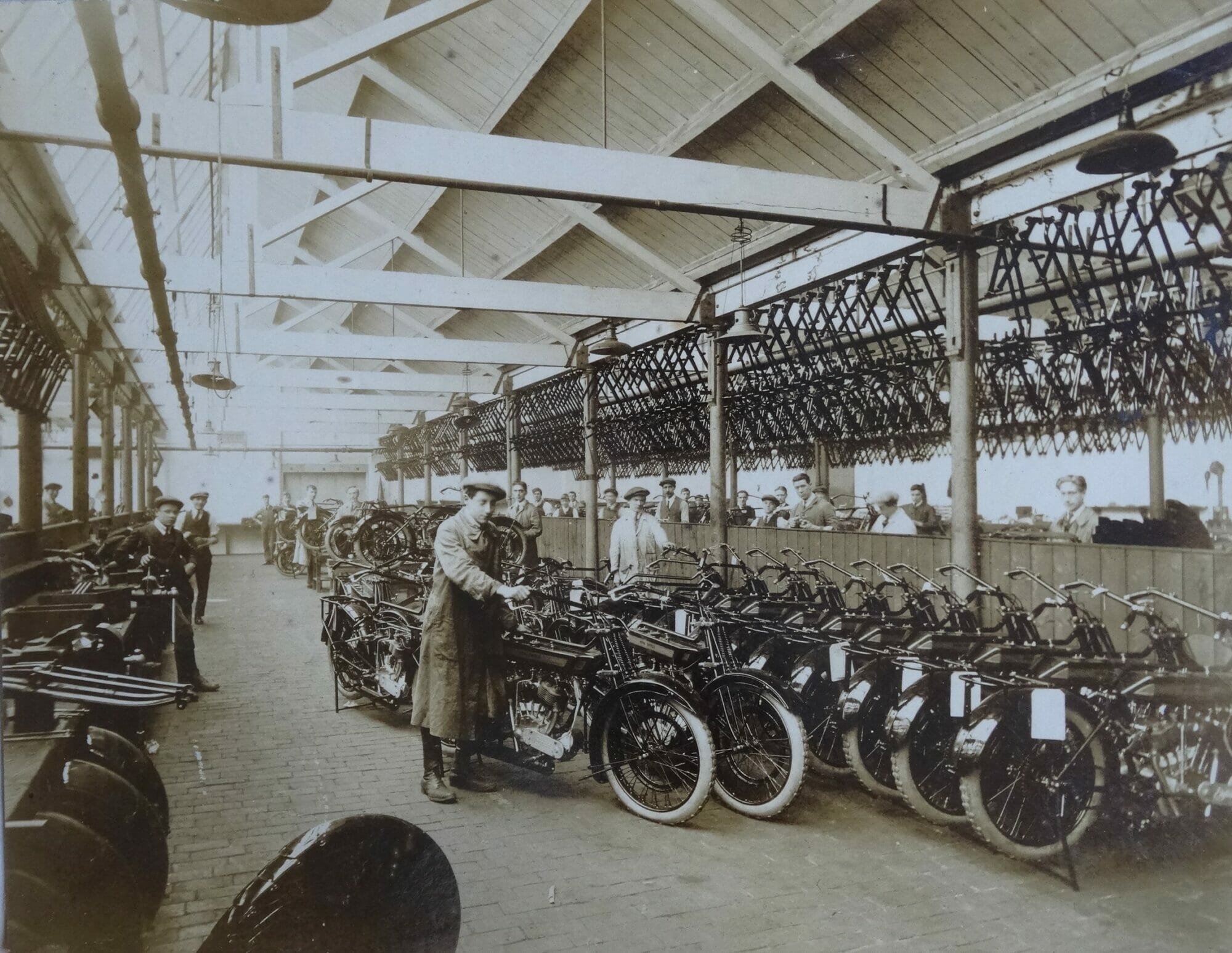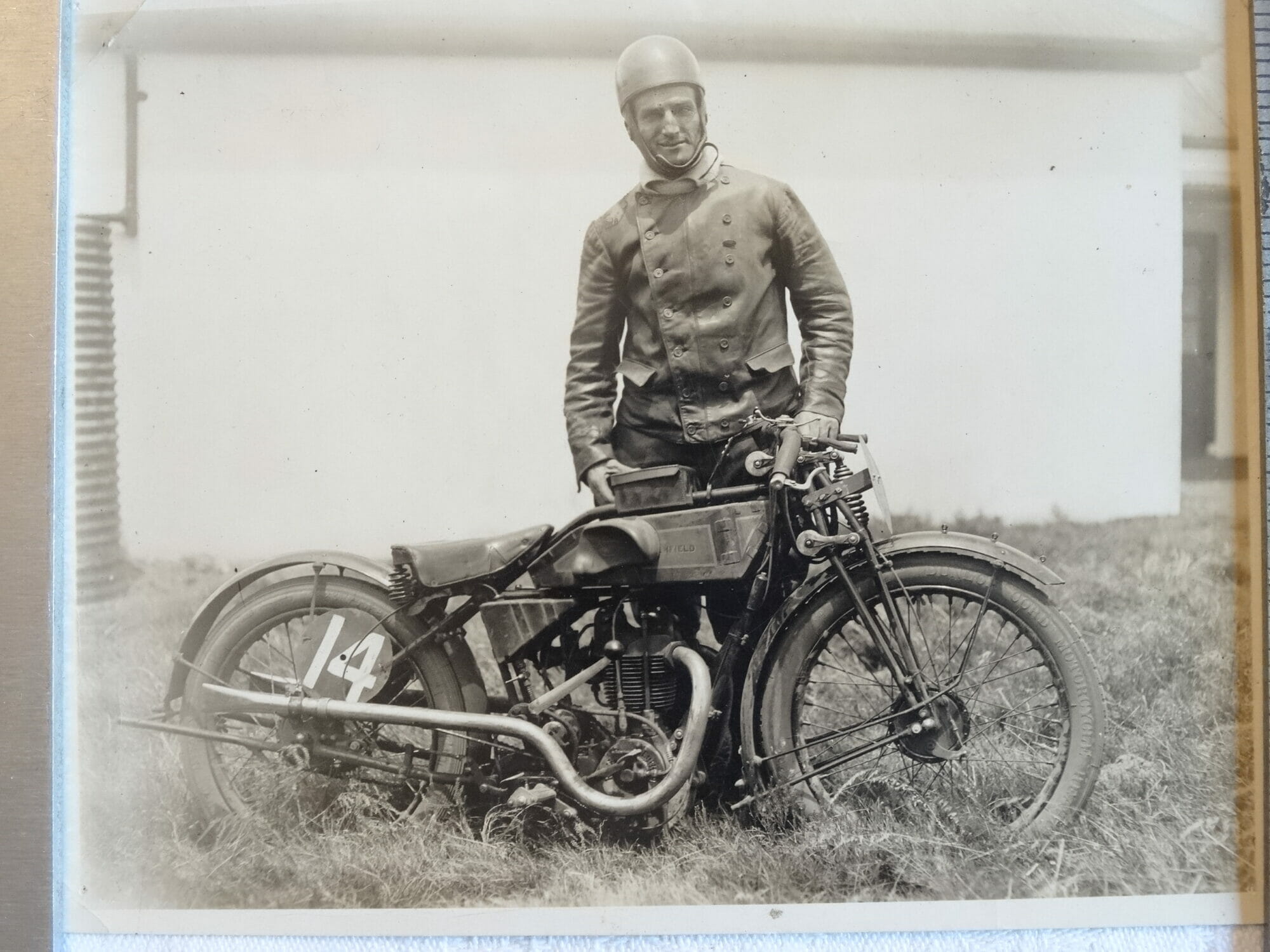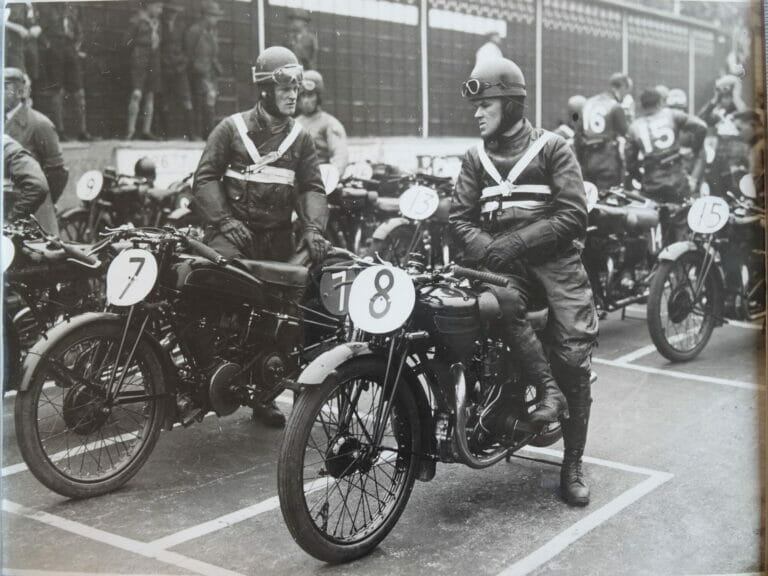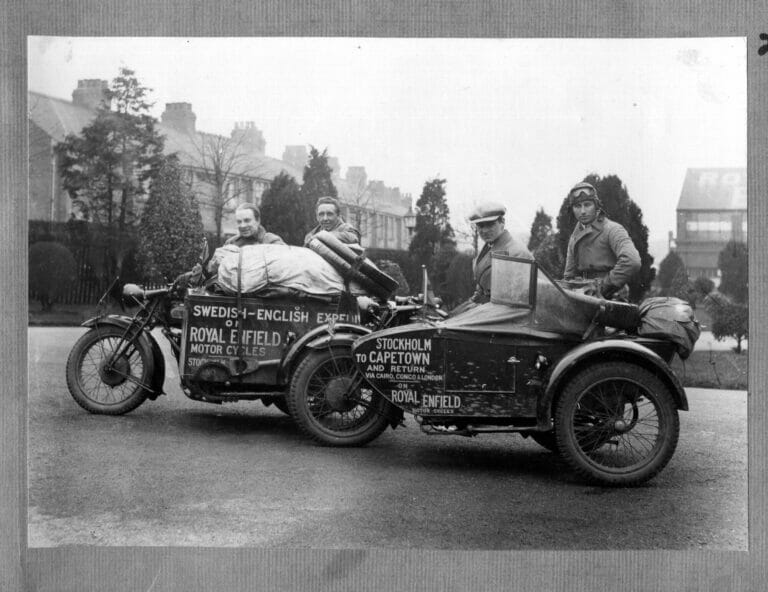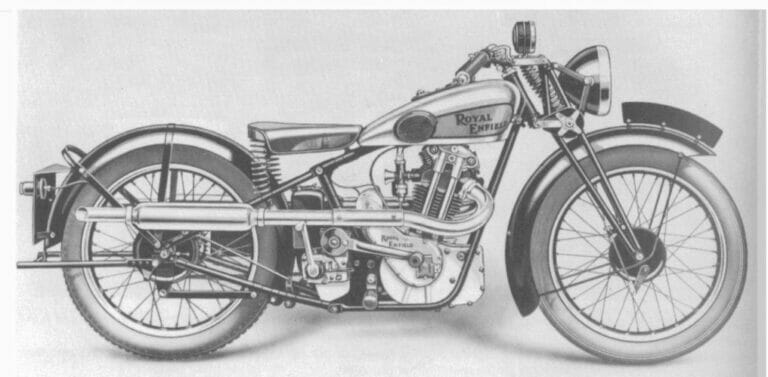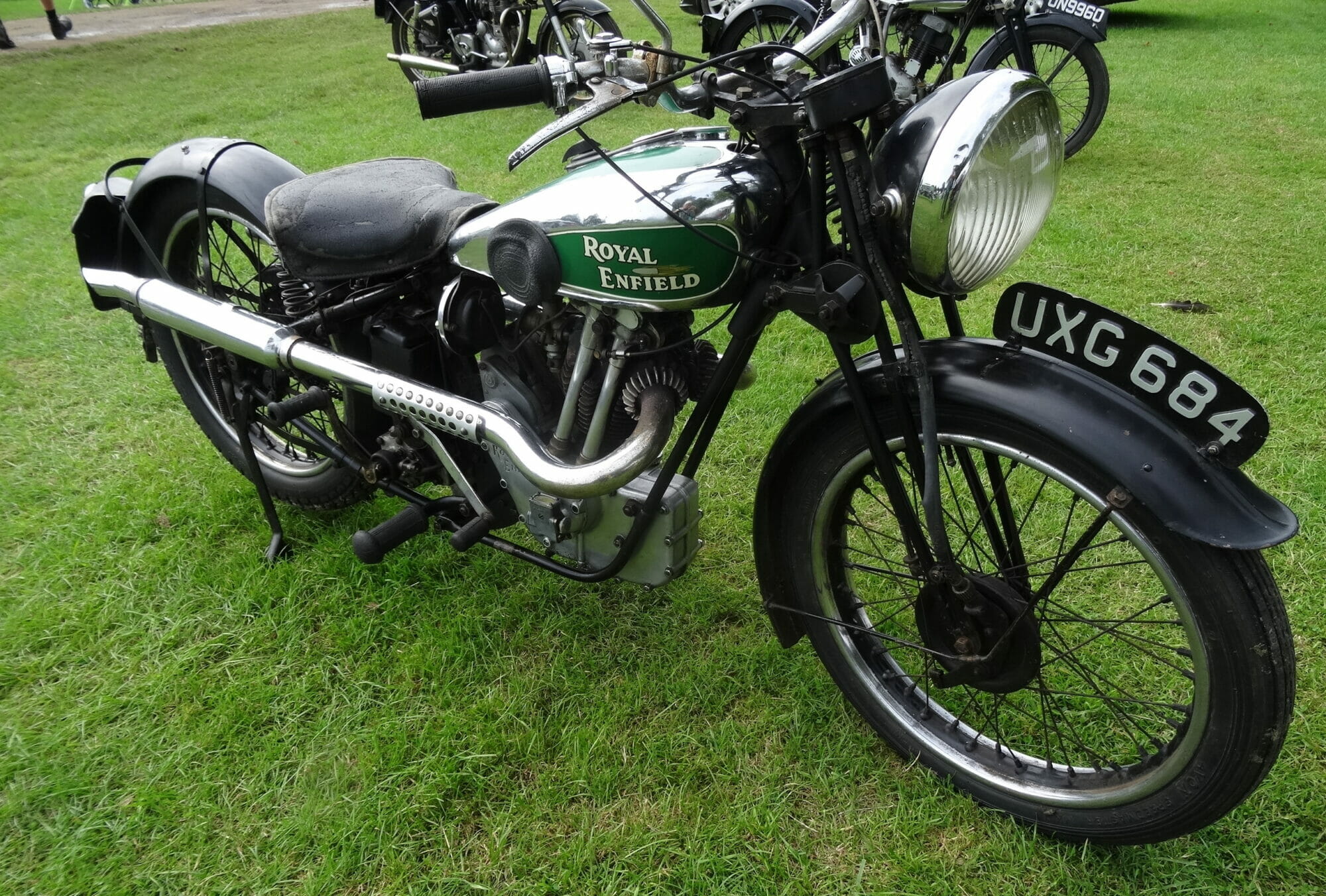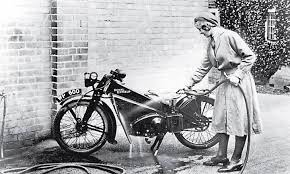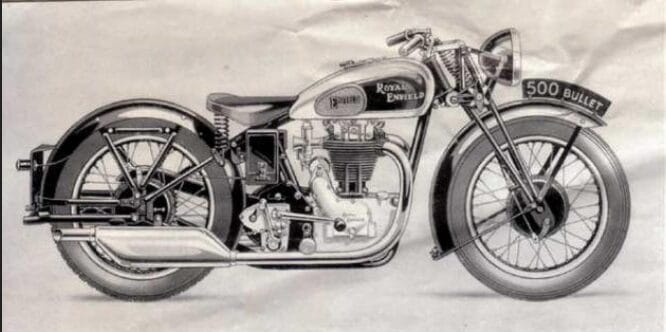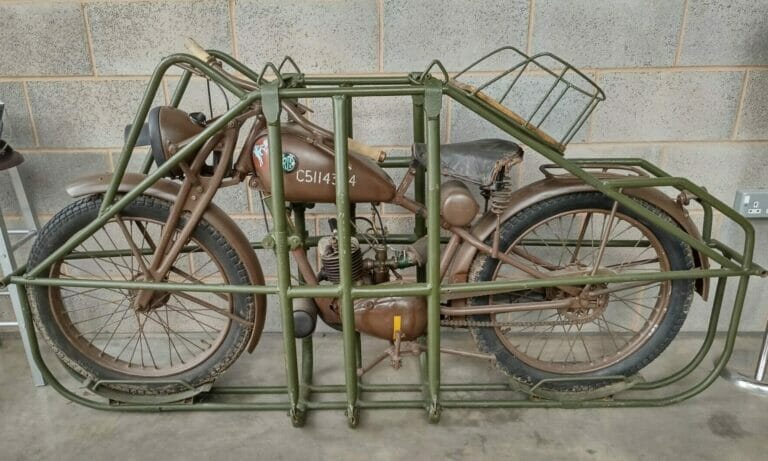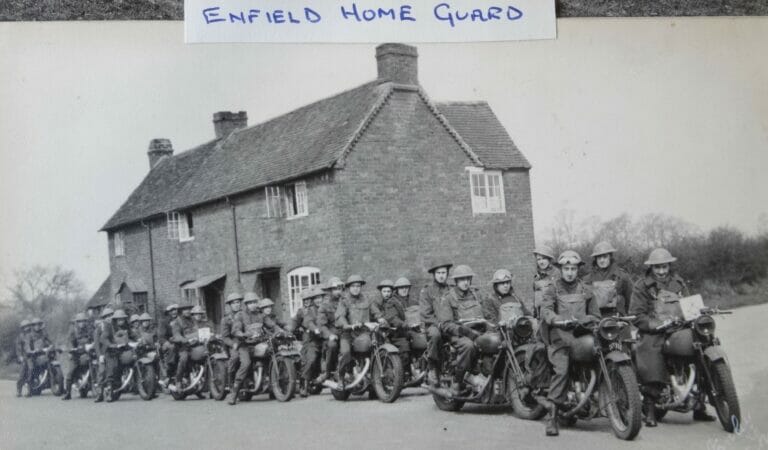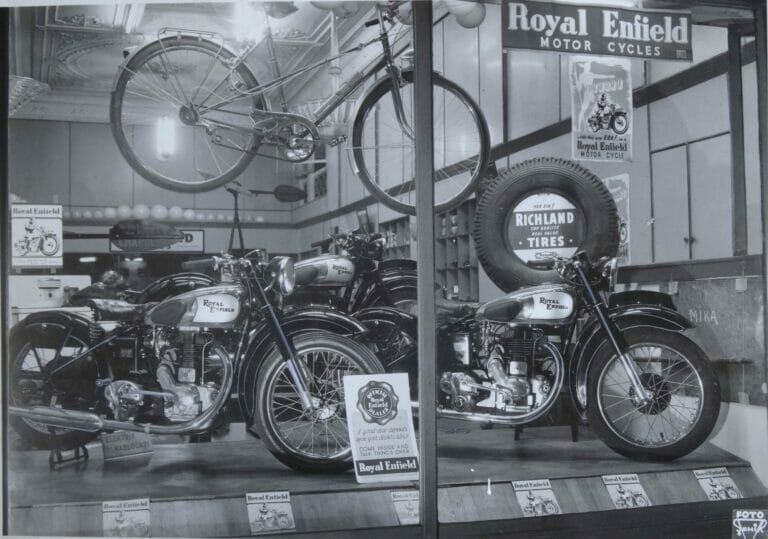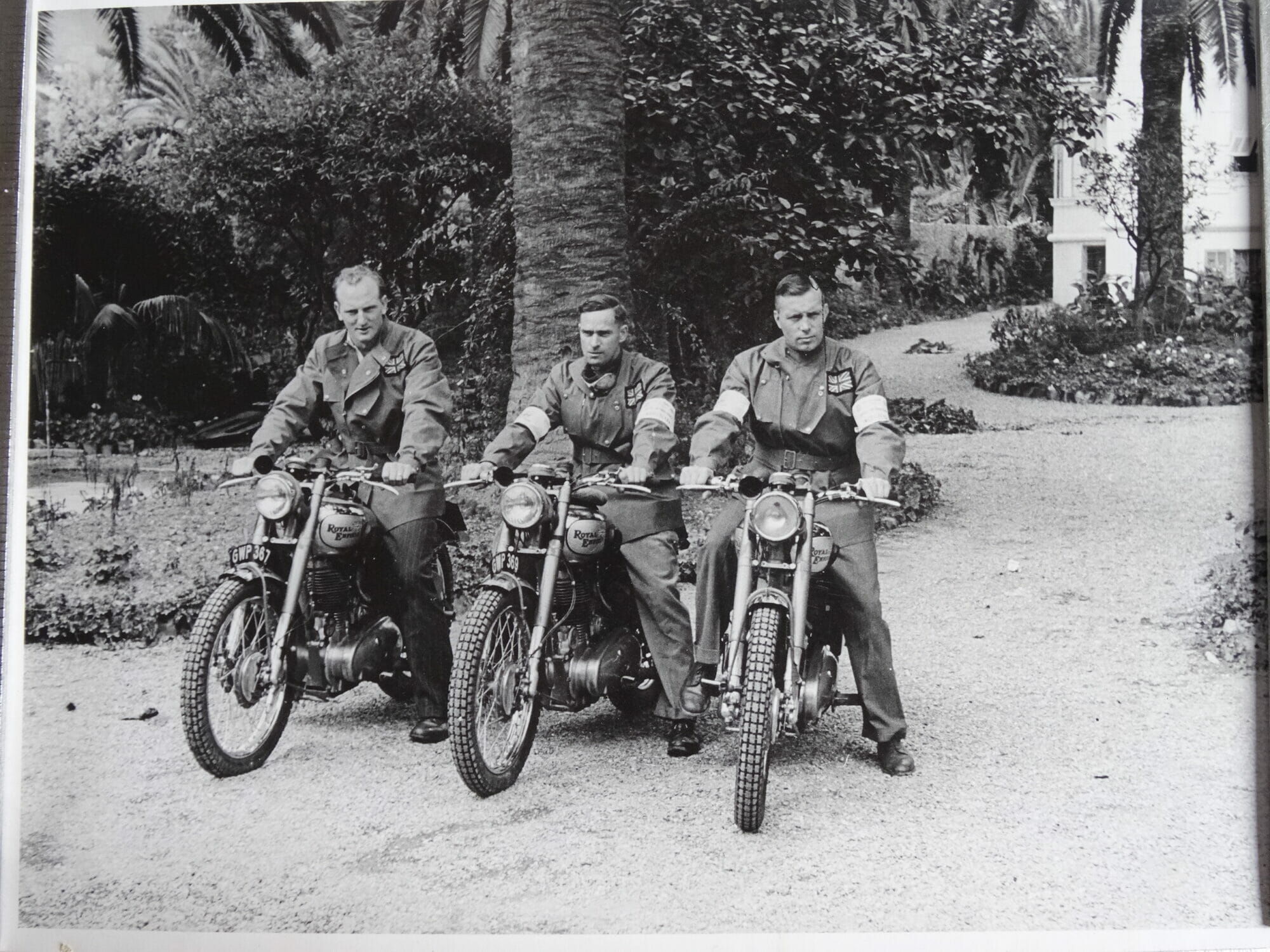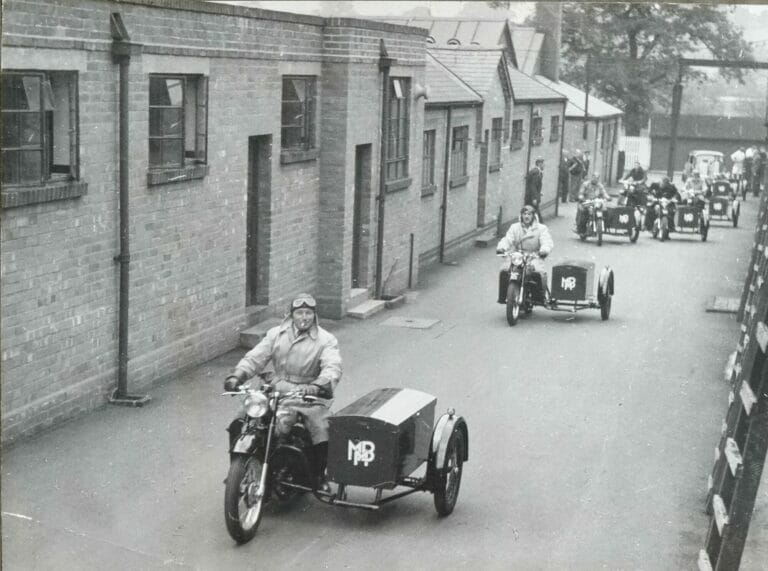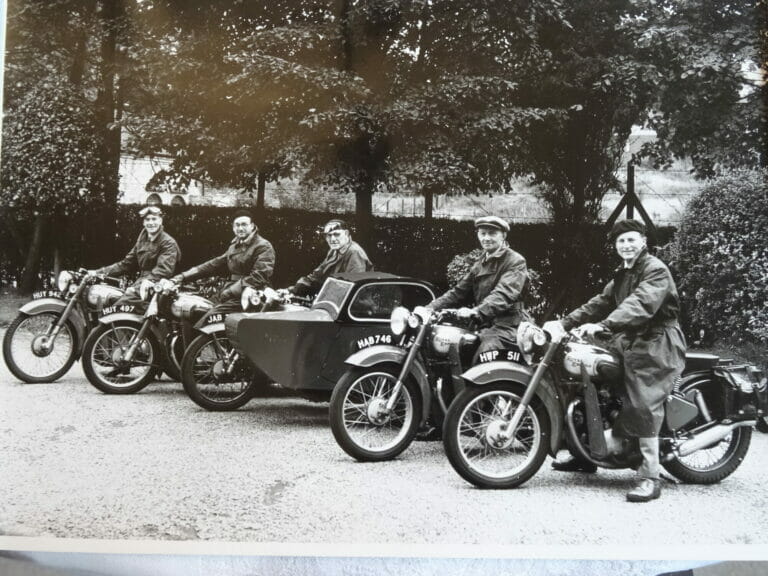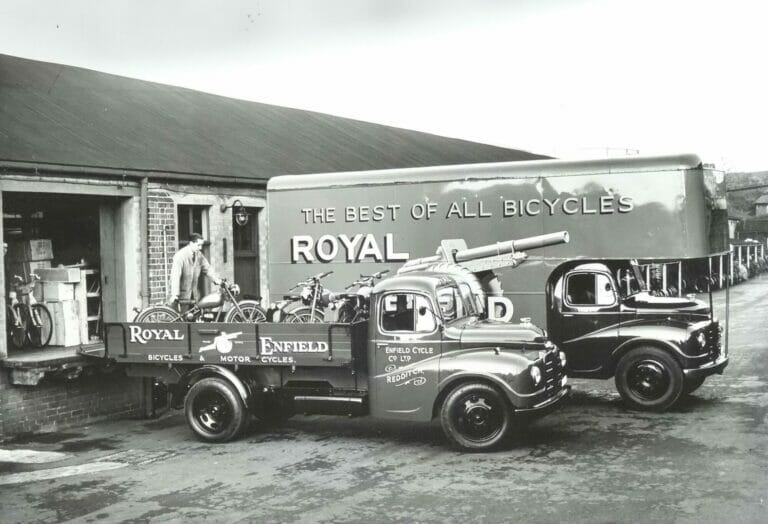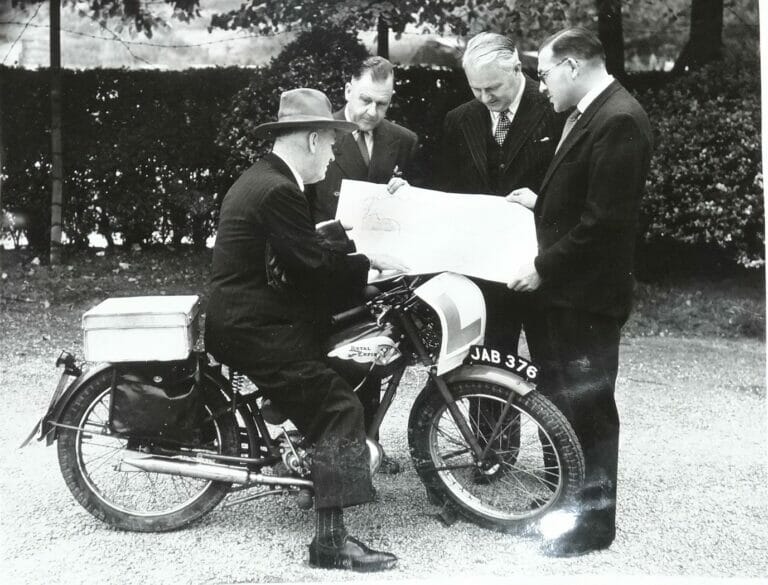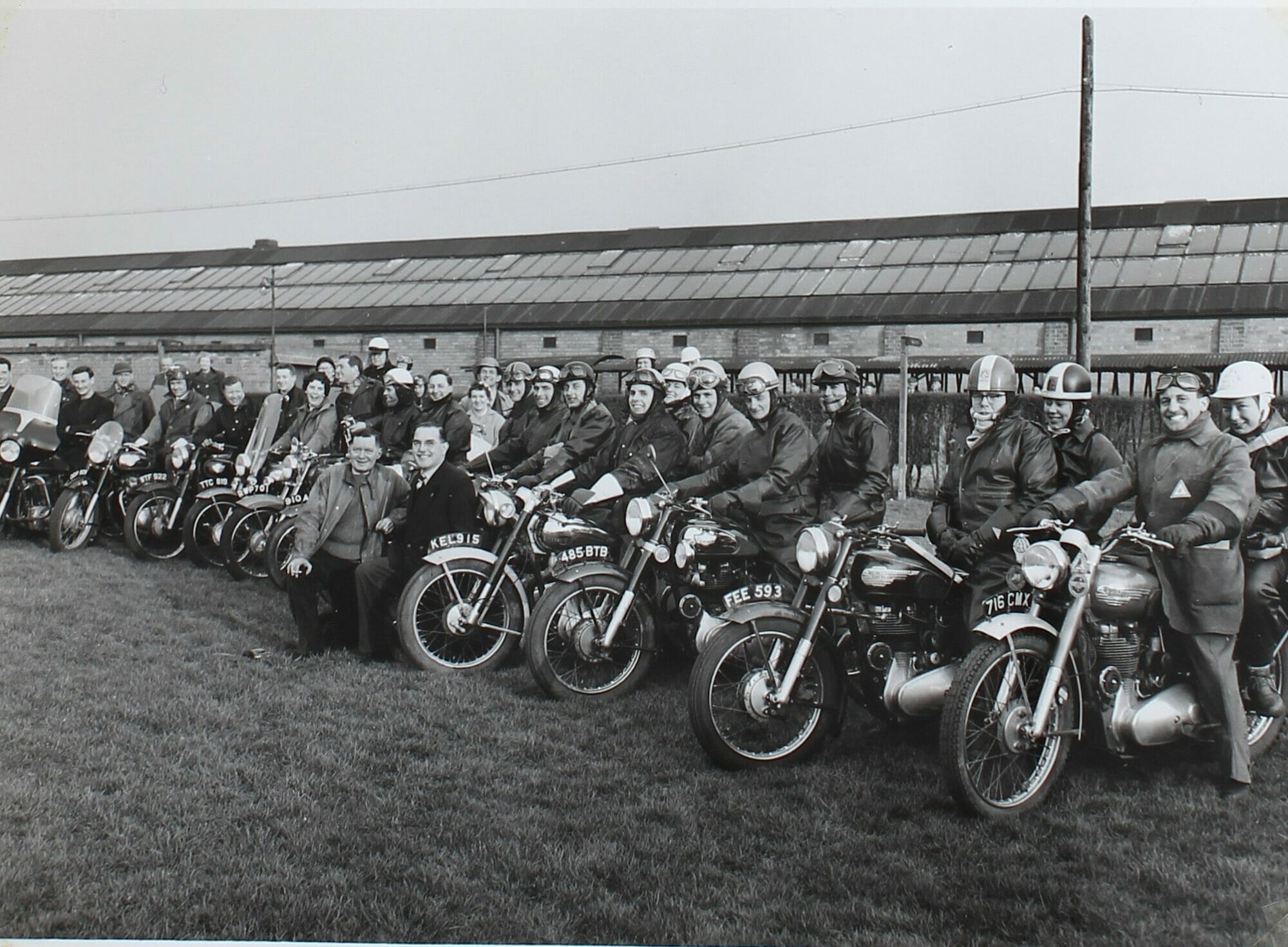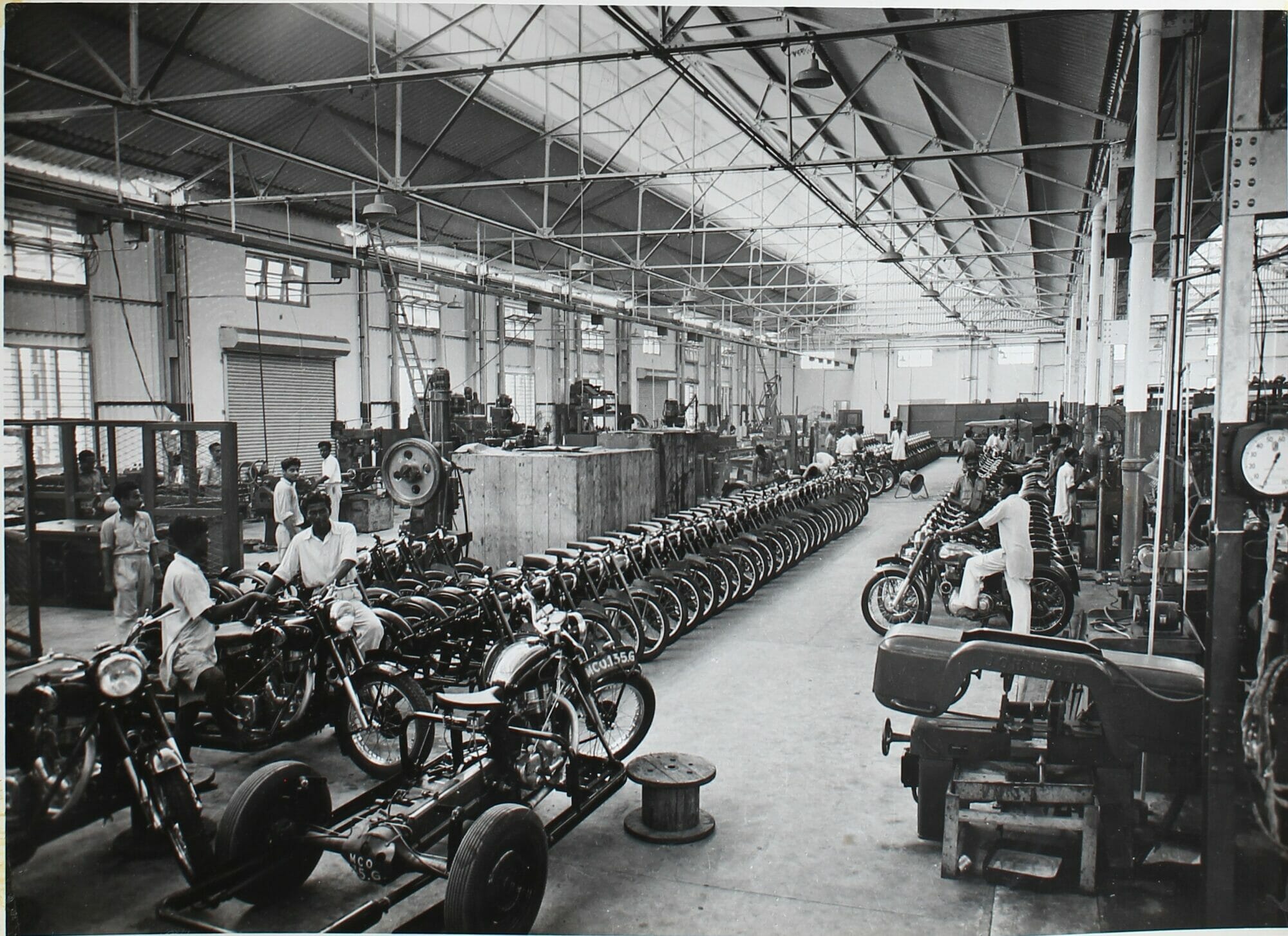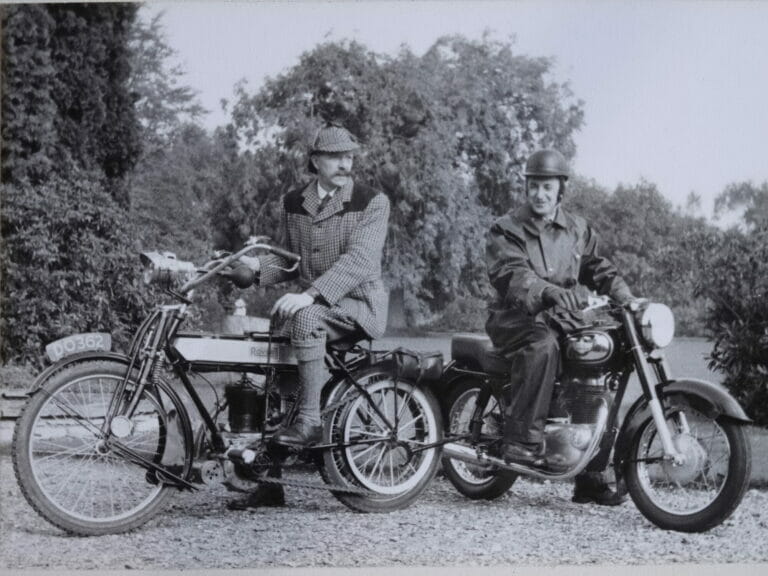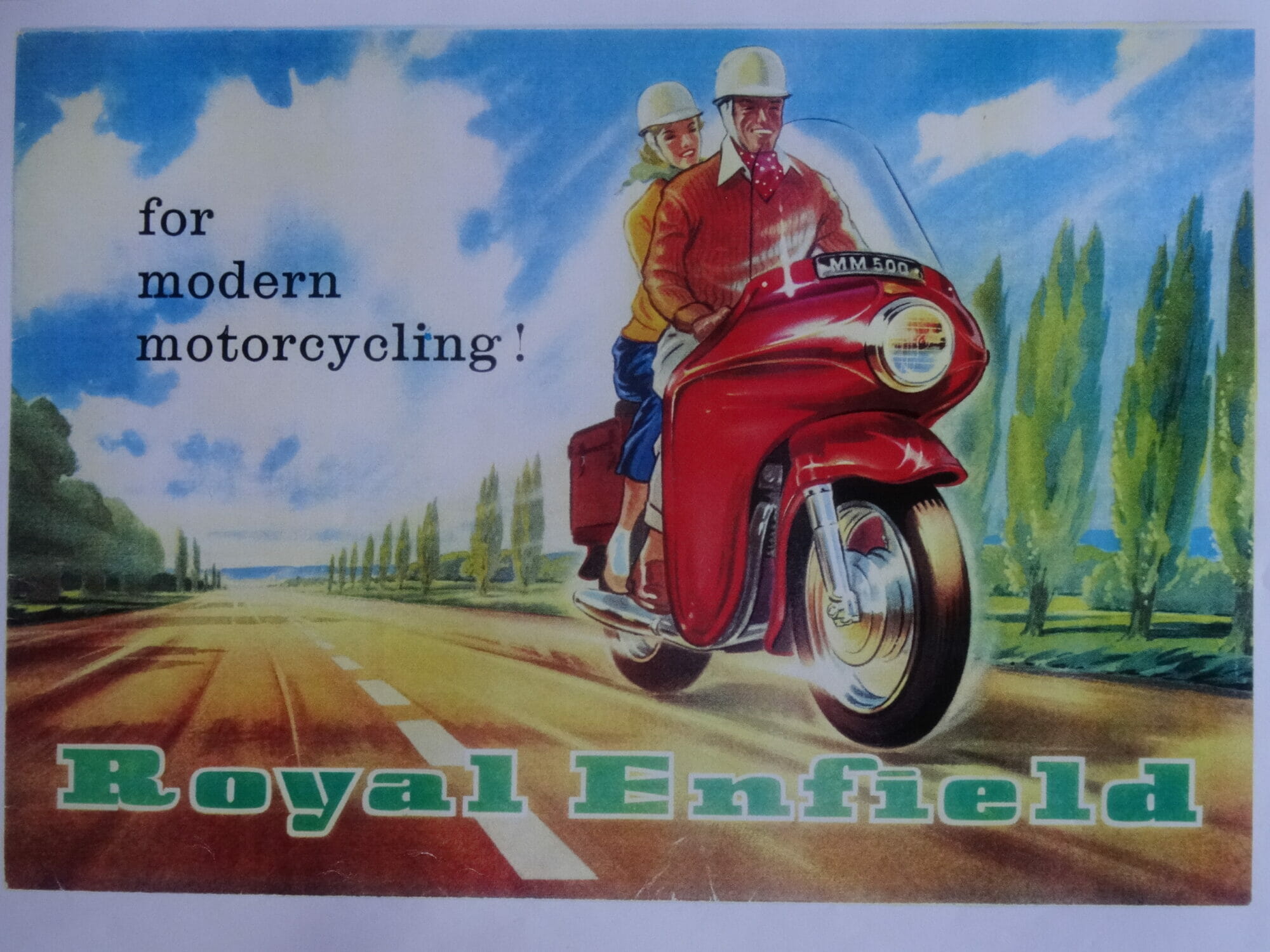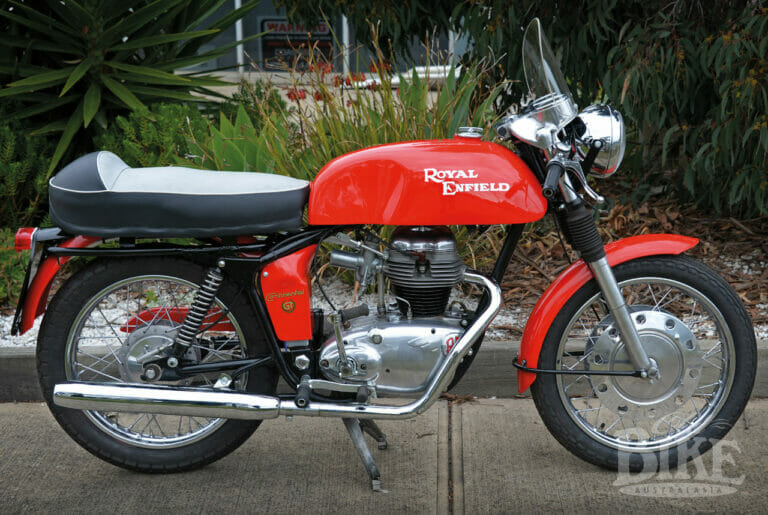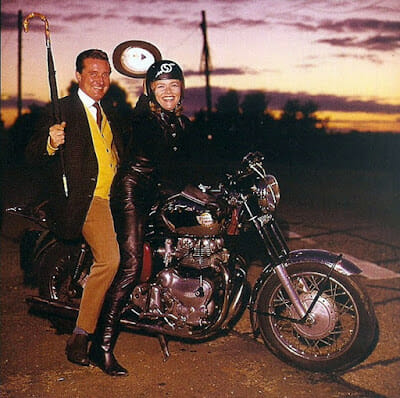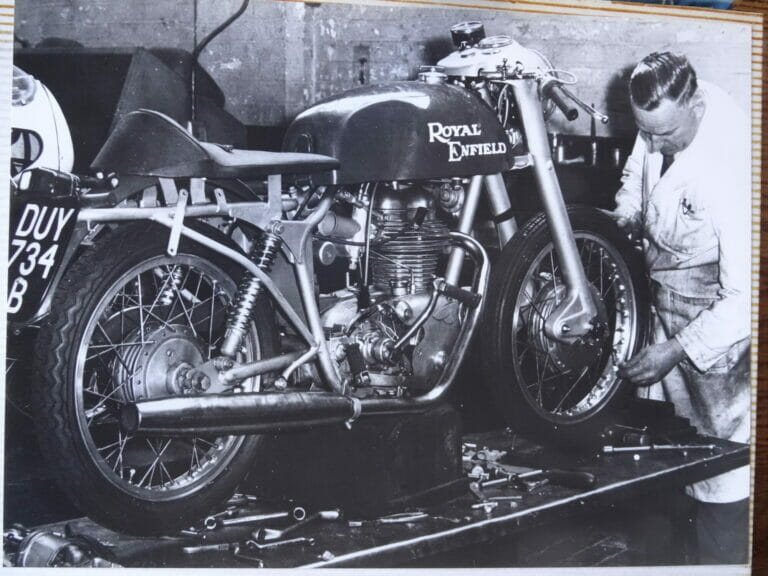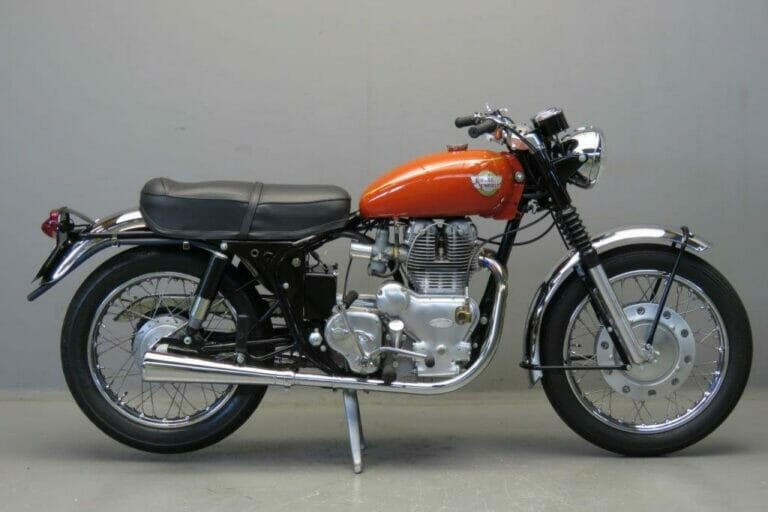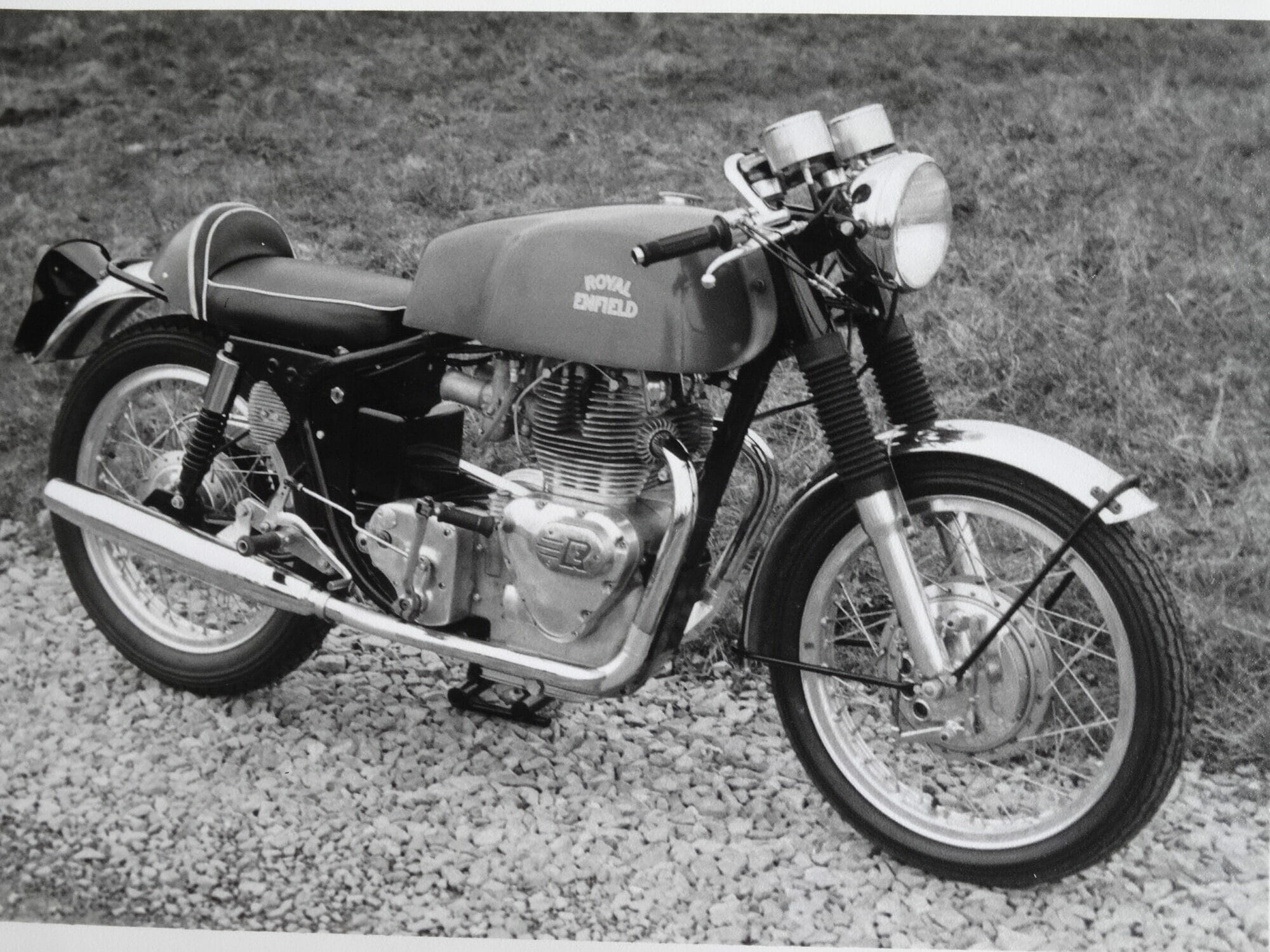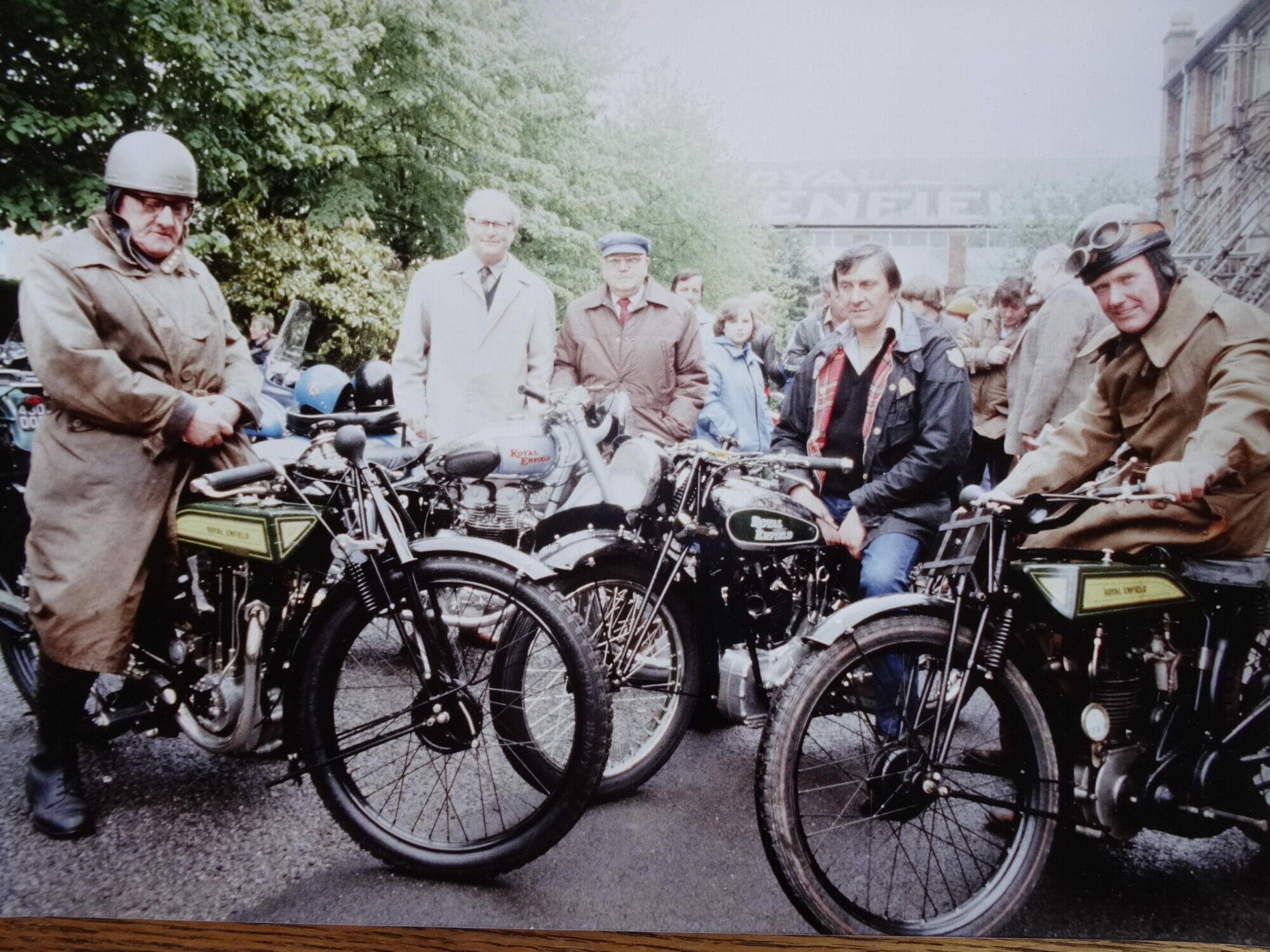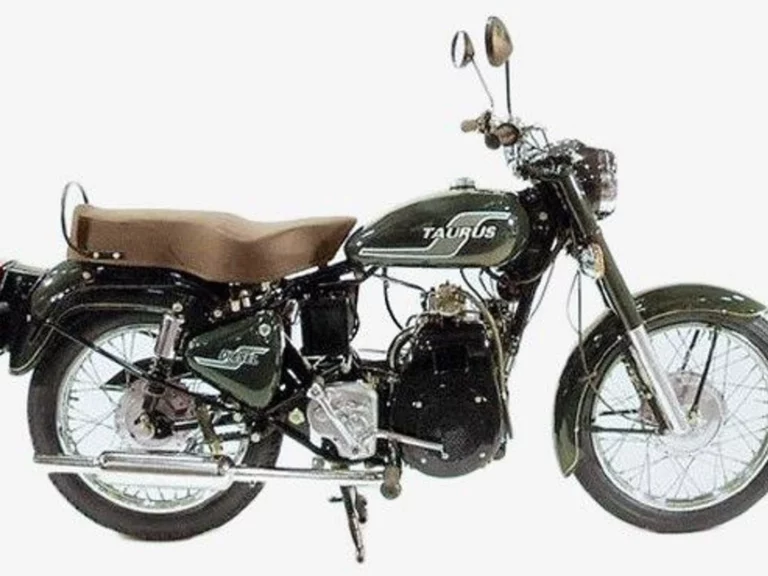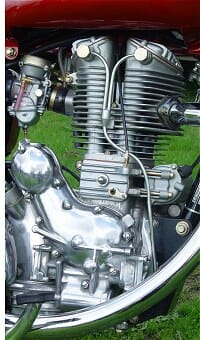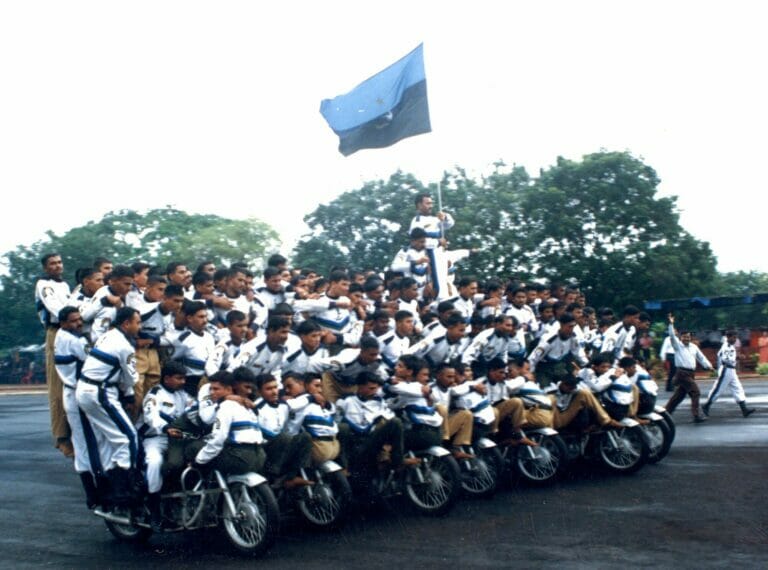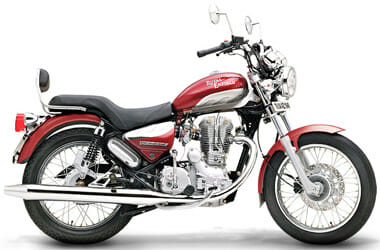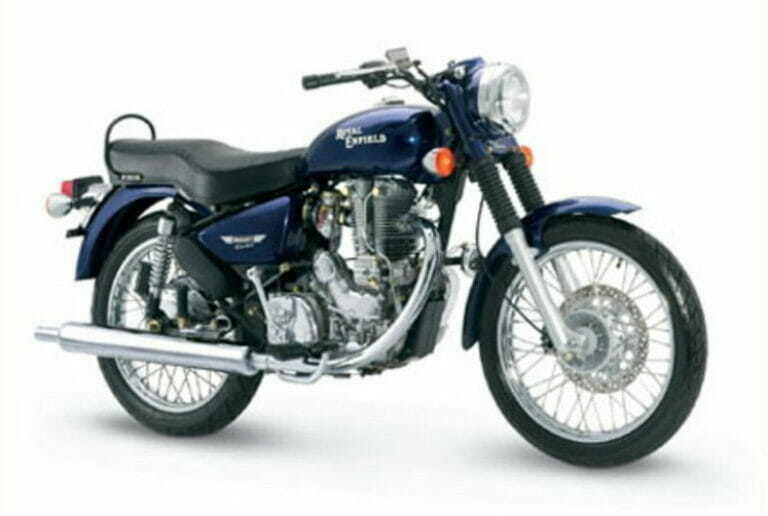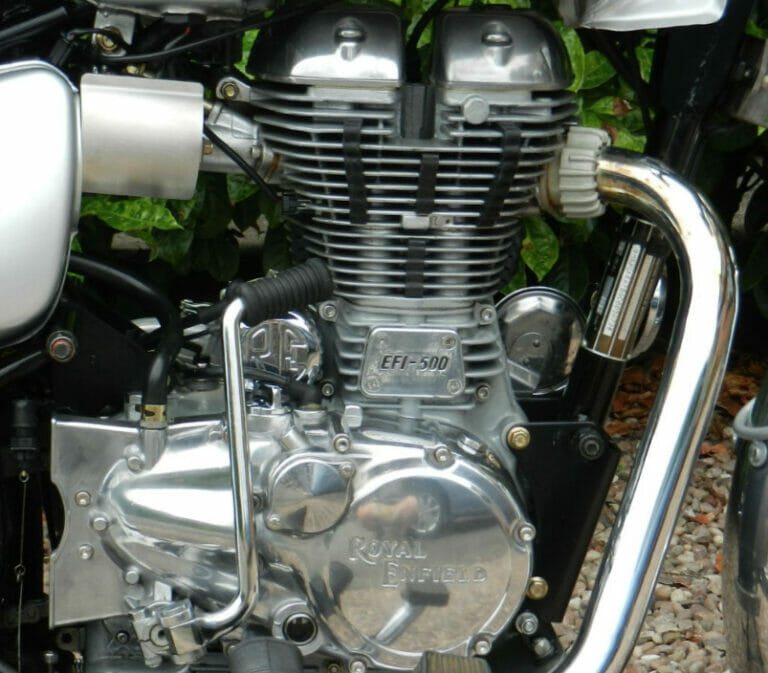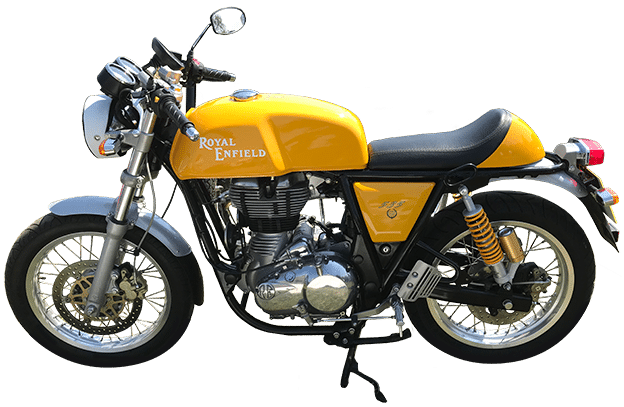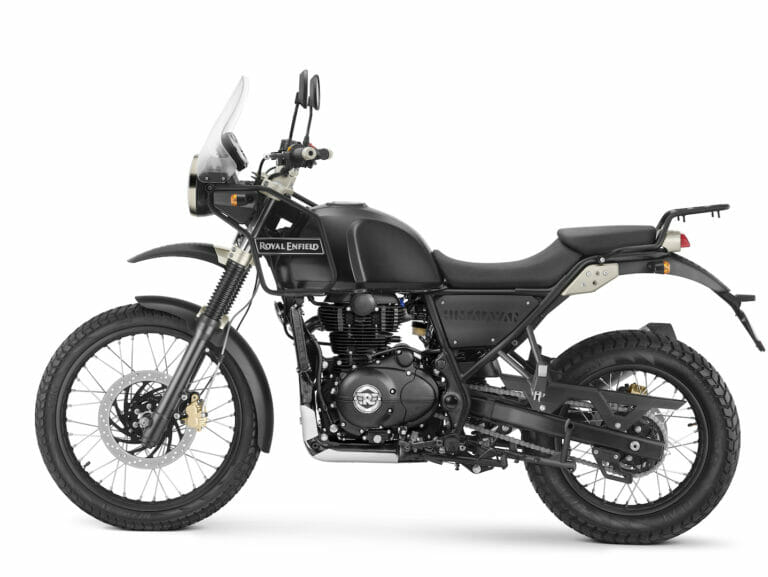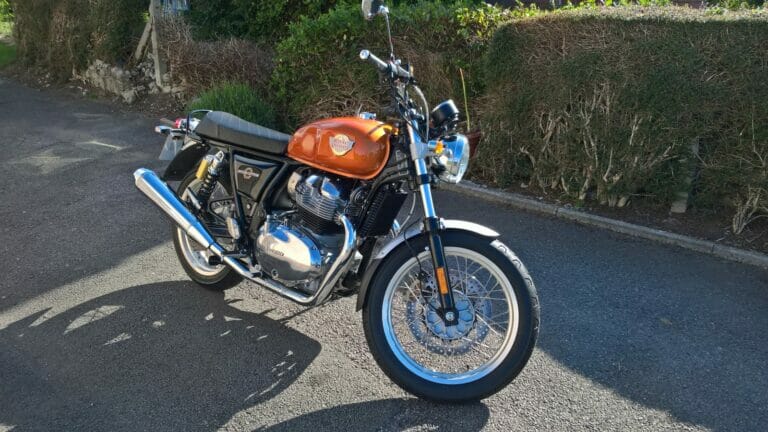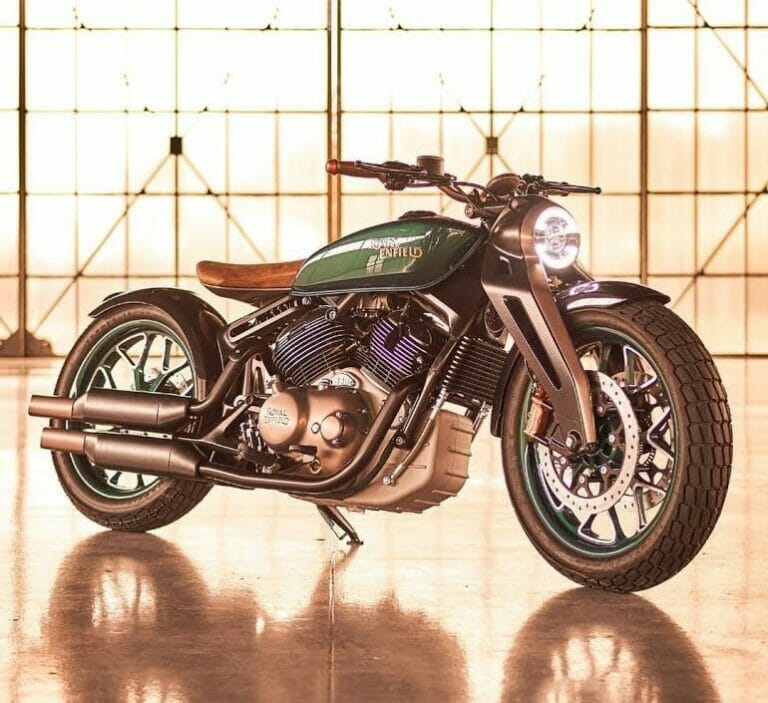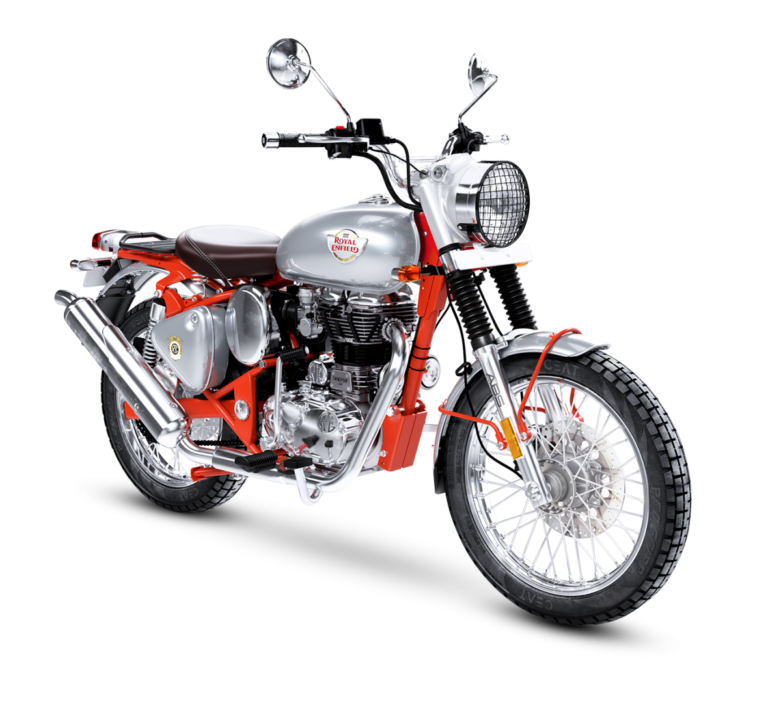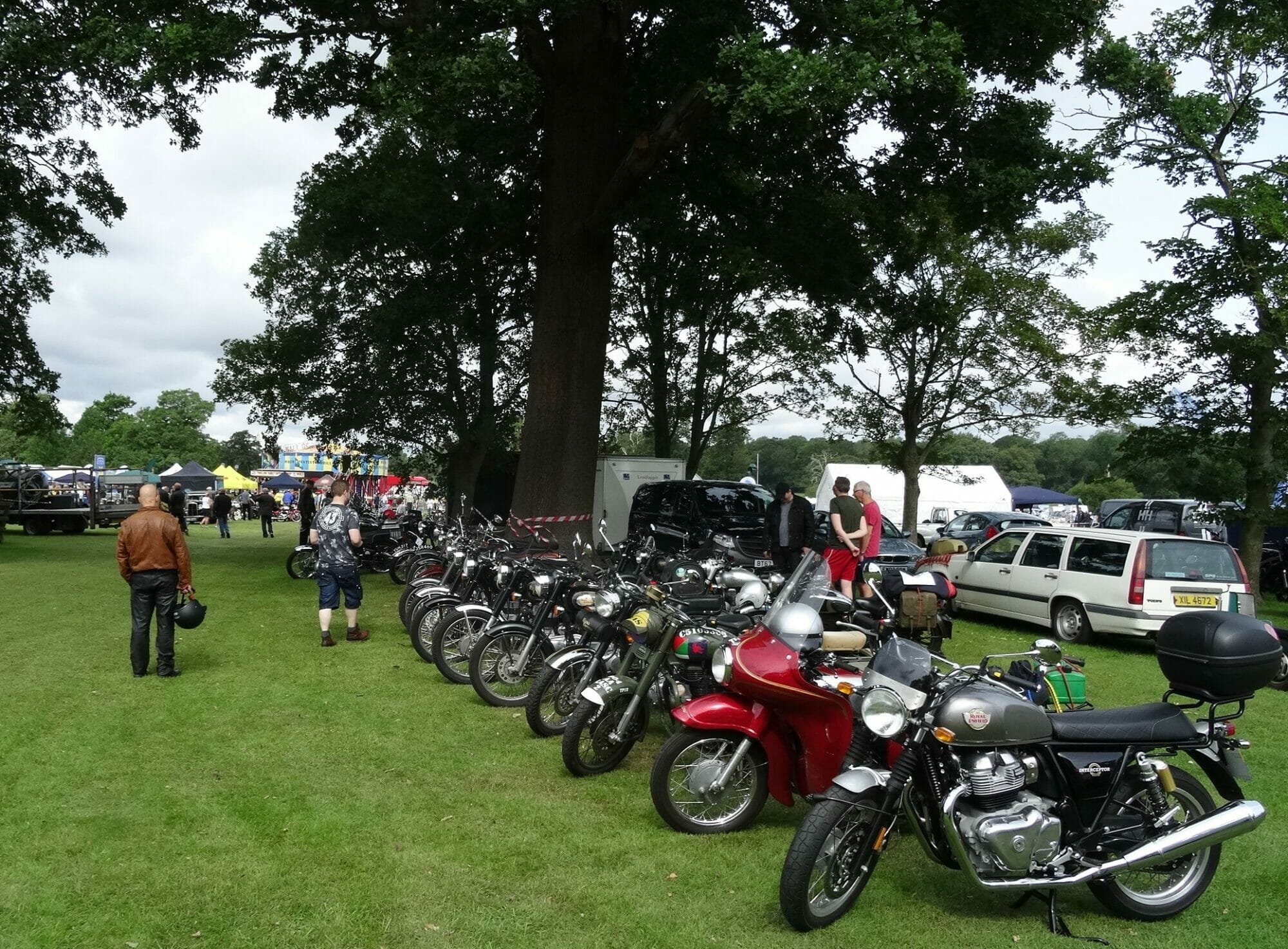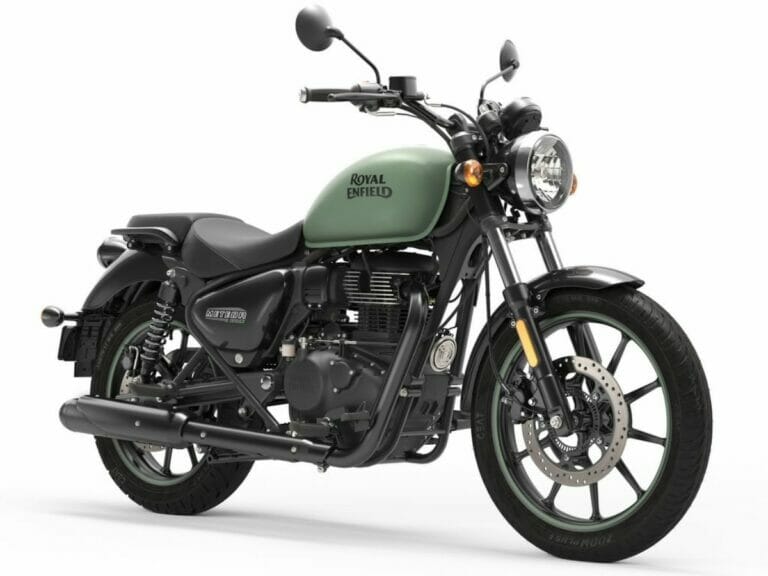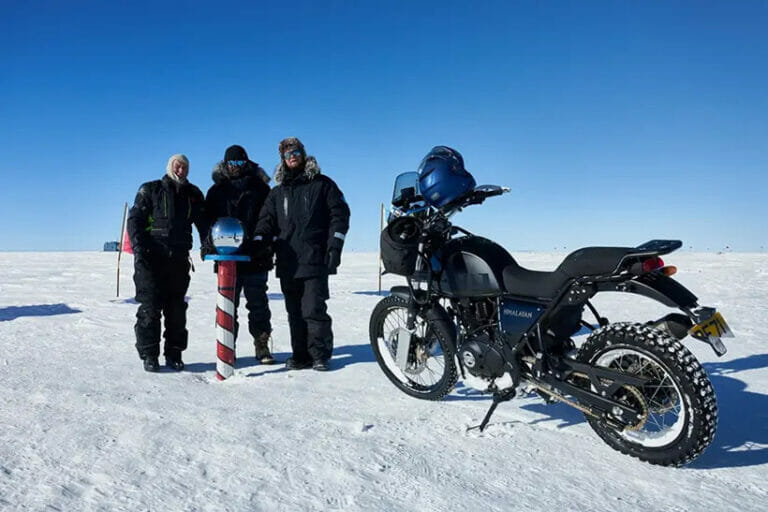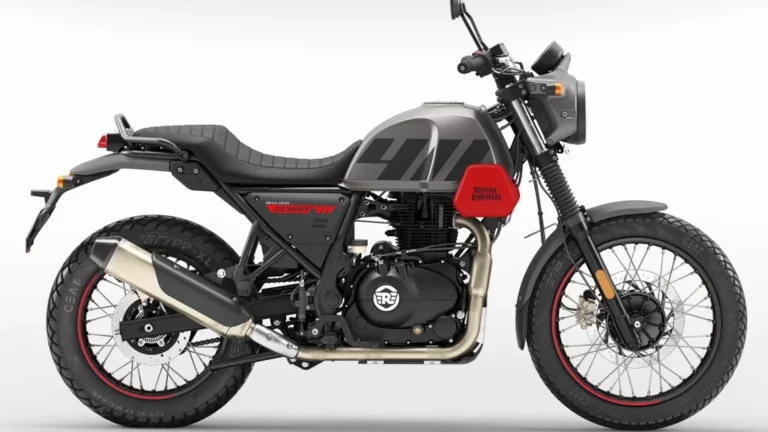Royal Enfield Timeline
A brief history of Royal Enfield and the REOC
1891
Bob Walker Smith and Albert Eadie purchase a well known needle manufacturer that had recently branched out into building bicycles.
1893
The company wins a contract to supply precision parts to the Royal Small Arms factory in Enfield. In celebration of this, the company is renamed The Enfield Manufacturing Company Ltd.
1894
The company’s bicycles are renamed “Royal Enfields” and the trademark “Made like a gun” is introduced, and is still in use today in various forms.
1898
The company’s first motorised vehicle, a 1.5 HP quadricycle, is produced, with a De Dion engine.
The company’s name is changed to The Enfield Cycle Co Ltd, a name that continues to be used for the next 70 years.
1900
Royal Enfield’s first recorded entry into motorsport, when one of its quadricycles takes part in the 1000 mile trial.
1901
Royal Enfield produces its very first motorcycle, the “Motor Bicycle” with a 1.5 HP Minerva engine mounted above the front wheel, driving the rear wheel via a twisted leather belt.
1902
The first RE motorcycle is updated, with an Enfield engine of 239cc producing 2.75HP.
Enfield Cycle Co. exhibits at the Stanley Show, and displays two quadricycles, one tricycle and three different motor bicycles, one of which featured a 2.25HP water-cooled engine, weighed 140lbs and could reach a top speed of 30mph.
1909
Royal Enfield’s first V-Twin motorcycle is introduced, “The Lightweight”, with a 297cc 2.5HP engine from Swiss company Motosacoche, which successfully competes in numerous competitions including the John O’ Groats to Lands End Trial. Enfield fits its own v-twin engine in later versions.
1911
A 2.75hp, 343cc model appeared with a V-twin engine, chain drive and the option of two-speed gearing. One such machine came fifth in the Junior TT and others saw success at the Brooklands racing circuit.
1913
The twins are joined by a 3hp model with a 424cc Royal Enfield engine with overhead inlet-valves and a dry-sump lubrication system. Until World War I, the big twins are supplied with 770cc, 6hp JAP engines and after WWI with 976cc, 8hp Vickers-Wolseley engines.
1914
A TT version of the 3hp twin is added to the range. Again the firm enters the Junior TT but what success they have is soon wiped out by tragedy when F. J. Walker comes third but crashes at the finish and later dies from his injuries.
During the year the firm adds a 225cc two-stroke, two-speed to the range, their very first two-stroke engined machine. Lightweight and simple in design, the model has a long and successful lifespan.
Throughout the war years, the firm builds the 6hp model for service sidecar use. Some are fitted out as an ambulance, others with a Maxim machine gun. They also experiment with a 675cc three-cylinder in-line two-stroke with a bevel box to the two-speed gearbox and rear wheel by chain.
1919
Civilian models return in 1919, with just two types available. The 6HP JAP V-twin, with an 8HP engine option for working with a sidecar, and the 225cc two-stroke as basic transport.
1920
The factory develops an experimental 850cc four cylinder-powered machine.
1924
Royal Enfield expands its range to 8 models, including the Sports Model 351, a 350cc OHV single, and a 225cc Ladies model. Drum brakes are adopted, and three-speed gearboxes appear for the first time on the road bikes.
1925
The Redditch factory suffers from a massive fire but the company’s own fire brigade manages to handle the outbreak.
1928
Royal Enfield adopts centre-sprung girder front forks, and “Saddle” fuel tanks in place of the older Flat Tank design. Some of the models now have 4-speed gearboxes.
Royal Enfield achieves TT success when Cecil Barrow comes second in the Lightweight class, plus other entrants are mounted on Royal Enfields, such as G.L. Raynard (shown here on number 8).
1929
A group of four ride from Stockholm to Cape Town and back on a pair of Royal Enfield 182 combination outfits.
1930
The model range expands again with a variety of 2-stroke and four-stroke machines including 350cc and 500cc sidevalve and OHV machines and the K-model 976cc V-Twin.
1932
The very first Royal Enfield Bullet single is introduced, in 250cc, 350cc, and 500cc form, with exposed 4-valve rockers and an inclined cylinder.
The Enfield Cycle Co. starts to produce a range of Motor Mowers, with 98cc, 148cc and 225cc capacity engines.
1933
Founding partner Bob Walker Smith passes away, and his son and joint managing director, Major Frank Smith, assumes full control of the company.
The Model Z “Zycar” model, with a fully enclosed engine and legshields, is introduced, aimed at the commuter market.
1936
The 500cc Model J is redesigned as the Model JF with a 4-valve cylinder head. A high-performance sports version is available by special order.
1939-1945
Royal Enfield concentrates on war production, not only of motorcycles, including 250cc, 350cc and 570cc OHV and SV bikes, and of course the famous “Flying Flea” parachute-dropped 125cc 2-stroke, but also bicycles, generators and other equipment.
The factory has its own Home Guard unit, mounted, of course, on Royal Enfield motorcycles.
1948
The first post-war 350cc Royal Enfield, with oil-damped swinging arm rear suspension, takes part in the Colmore Cup trial and two of them in the ISDT (International Six Days Trial), held in Italy. Both their riders win gold medals, the start of a long association of Royal Enfields and Trials.
The Milk Marketing Board orders model-J combination outfits.
1949
New 350cc Bullet models are launched in the UK, in road, trials, or scrambles trim.
In the same year, Madras Motors is founded in India, to import British Motorcycles into India.
1950
Royal Enfield staff take a continental tour on their bikes, visiting French and Swiss dealers.
The factory acquires new delivery vehicles.
Mr Tschiffley completes a 3000 mile tour of Spain on an R-E 125
1952
Johhny Brittain wins the Scottish Six Days Trial on a Royal Enfield 350cc Bullet.
The Redditch factory receives an order, via Madras Motors, for 500 350cc Bullets for the Indian Army.
1953
Johnny Brittain, on his 350 Bullet, takes part in the International Six Days Trial (ISDT) as part of the last ever British team to take top honours, competing in Czechoslovakia.
1955
Enfield India is formed as a partnership between Royal Enfield and Madras Motors. A new factory is constructed near Madras.
Agreement signed with Indian Company of America and J. Brockhouse to build Indian named Royal Enfield motorcycles
July 5th, The first REOC is formed by 25 owners at the Crown and Sugarloaf, Garlick Hill, London, supported by the company.
1956
The new Enfield India factory is opened and starts producing the Royal Enfield Bullet under license, initially building them from kits shipped from the Redditch factory.
The Enfield Cycle Co. ceases production of Motor Mowers.
1957
Johhny Brittain wins the Scottish Six Days Trial again, on a Bullet, and finishes first in the British Trials Championship.
The 250cc Crusader model in launched, with a unit construction engine and alternator and coil electrics.
1964
The Continental GT café racer is launched, and is ridden from John O’ Groats to Lands End in under 24 hours including 8 laps of the Silverstone Racing Circuit.
1964
A modified Royal Enfield Meteor Minor Sports (with some Constellation touches) appears in an episode of The Avengers TV seres, with Honor Blackman (who was a Despatch Rider in WW2 and thus eminently qualified).
1965
A Royal Enfield road bike takes 4th place at the Thruxton 500 mile production race. The picture shows it under preparation in the competition department.
In December, the first RE Owners Club is disbanded due to falling membership numbers.
1966
Jun 27th Letter of Redditch site closure sent to all employees.
1967
The Royal Enfield range is reduced to two models, the 250cc Continental GT and the 736cc Interceptor.
The Redditch Factory closes and production of the Interceptor continues at the company’s facility near Bradford Upon Avon.
1970
In June the last UK Royal Enfield motorcycle production run ceases when the Bradford on Avon facility closes.
1977
Enfield India starts export of 350cc Bullet models to Europe and the UK.
The Royal Enfield Owners Club (REOC) is formed in the UK. August 21st – A committee is formed for the new REOC, in Cheddar.
The first REOC rally is held in the Mendip hills.

1978
The first issue of the REOC publication “The Gun” is produced, and the club’s first AGM is held.
1979
The club has an unlimited loan of the factory ledgers, used to identify individual machines.
1989
The Enfield India 500cc Bullet is released, aimed mostly at the export market, available in various trim levels.
1992
Aug 29th Royal Enfield 100th Anniversary Rally, Norgrove Court, Redditch.
1993
Enfield India produces The Enfield Taurus Diesel, the world’s first mass-produced diesel motorcycle, using a very fuel-efficient 325cc engine in a Bullet chassis. It achieved 200mpg, but vibrated and smoked badly and could only do 40mph.
1994
The Eicher Group, a large commercial and agricultural vehicle manufacturer acquires Enfield India and renames it to Royal Enfield Motors Limited.
1996
The club buys the factory ledgers from the private owner. (photo to follow).
1997
An expedition comprising 40 Royal Enfield Motorcycles climb to Khardung La, the world’s highest motorable pass, which leads in due course to the annual Himalayan Odyssey ride.
1999
The all-aluminium 350cc “lean-burn” Bullet engine starts being produced at Royal Enfield Motors’ new plant near Jaipur. It is designed to cope with recent noise and emissions regulations in various markets.
2000
Jun 23rd, The REOC Millennium Rally, Orrell, Lancs.
2001
The Indian Army motorcycle display team “The Daredevils” mount a human pyramid of 201 men on ten 350cc Bullets to set a new world record.
2002
The Thunderbird cruiser is introduced, utilising the 350cc Lean Burn engine with a five speed gearbox.
More than 1000 Royal Enfield motorcycles attend the REOC’s “Redditch Revisited” event.
2005
Royal Enfield Motors celebrates 50 years of production in India with two commemorative models, and a Coffee Table book – “The Legend Rides On”
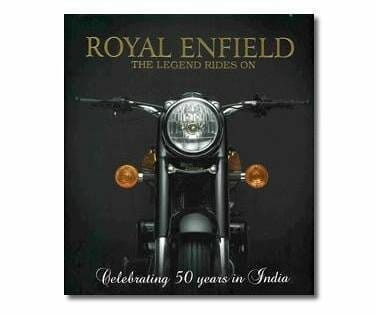
2008
The Thunderbird Twin-Spark is launched in India, with the all-new Unit Construction engine.
The Classic EFI, Royal Enfield’s first fuel-injected motorcycle, starts to be exported to Europe.
2009
Bikes incorporating the new EFI-fuelled 500cc unit construction engine go on sale in the Indian market.
2011
The company acquires 50 acres of land at Oragadam for a new factory.
The annual “One Ride” event is inaugurated.
2012
The Tiruvottiyur plant sets a new production record, as Royal Enfield hits an annual sales figure of 113,000 bikes.
2013
The new factory at Oragadem starts production, and becomes the hub of modern Royal Enfield production.
Royal Enfield introduces the new Continental GT 535, featuring a Harris Performance-designed frame and an enlarged Unit Construction engine.
2015
Royal Enfield acquires Harris Performance, to expand their design and engineering capabilities.
Royal Enfield North America is established.
2016
Royal Enfield introduces the Himalayan, a dual-sport adventure motorcycle, with an all-new SOHC engine of 411cc, and a Harris-designed frame and suspension.
2017
Royal Enfield opens a large new technical design and engineering centre at Bruntingthorpe, near Leicester.
A third factory is opened in India, near Chennai, concentrating on 350cc machines.
The new 650cc twins, the Interceptor and Continental GT, are shown for the first time at the EICMA show in Italy.
2018
Royal Enfield launches the Classic 500 Pegasus, a homage to the World War II flying flea, at the Imperial War Museum. A limited run of 1000 individually numbered machines for the entire world market, they sell out very quickly.
Cayla Riva, an 18-year old female racer from California, sets a new land speed record in her class at the Bonneville Salt Flats Speed Week event, of 157.053 mph, on a customised Continental GT 650, with S&S Cycle engine tuning, mounted in a frame produced by Harris performance.
Royal Enfield shows a new concept bike at the EICMA motorcycle show. An 838cc V-Twin, it uses some design cues from the KX V-twin models of the late 1930s.
2019
A team of eleven riders, comprising Indian Army and Royal Enfield personnel, ride to the summit of the 5540m Karakoram pass in the Himalayan Mountains, through ice, snow and -30C temperatures, the first recorded successful attempt to reach this location by motorcycle.
Royal Enfield launches the Bullet Works Trials Replica 500, as a homage to Johnny Brittain’s many trials winning Bullets of the 1950s.
The Interceptor 650 twin garners many prestigious awards: Indian Motorcycle of the Year, Bike of the Year in the Times Auto Awards, Motorcycle of the Year by Autocar and Two Wheeler of the Year by Bike India. It is voted Best Modern Classic Middleweight in Thailand and Best Retro Bike of the Year by Motorcycle News in the UK.
July 19th – The REOC celebrates the 70th anniversary of the Royal Enfield Bullet, with a gathering at the Taverners Founders Day event, at Stanford Hall, at which over 250 Royal Enfield motorcycles attend.
2020
Production of the 500cc Unit Construction Engine ceases. A final run-out limited edition called the Classic 500 Tribute Black is produced.
Royal Enfield sets up a CKD (complete knocked down) assembly line in Argentina, to build bikes from kits sent from India. The President of Argentina attends the opening of the new plant.
The Meteor 350 Cruiser is launched, with a new 350cc engine and new frame, and introduces new electronic instrumentation, including the “Tripper” turn-by-turn navigation system.
2021
Royal Enfield celebrates 120 years of continuous production, under their “Pure Motorcycling” banner.
The 350 Classic is launched, using the same engine as the 350 Meteor, but styled as a tribute to the classic Bullet models of the past, with an all-new frame.
Royal Enfield employees Dean Coxson and Santhosh Vijay Kumar reach the South Pole on lightly modified Himalayans, after an epic 15 day trek across the icy continent, completing the 90° SOUTH Expedition.
2022
The Royal Enfield Scram 411, a naked street-scrambler inspired motorcycle, based on the Himalayan platform, is launched.
Views: 8310
